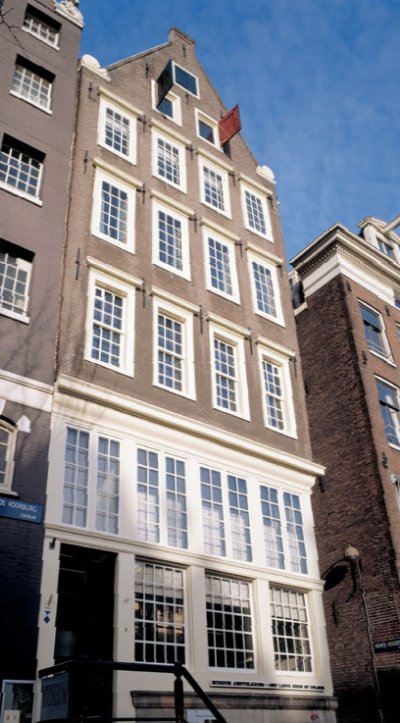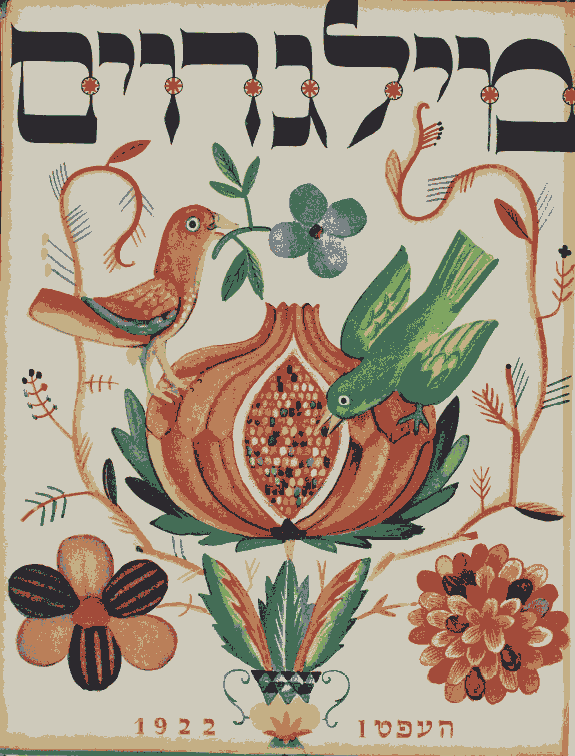|
Schuilkerk
A clandestine church (), defined by historian Benjamin J. Kaplan as a "semi-clandestine church", is a house of worship used by religious minorities whose communal worship is tolerated by those of the majority faith on condition that it is discreet and not conducted in public spaces. ''Schuilkerken'' are commonly built inside houses or other buildings, and do not show a public façade to the street. They were an important advance in religious tolerance in the wake of the Reformation, an era when worship services conducted by minority faiths were often banned and sometimes penalized by exile or execution. History According to historian Benjamin Kaplan, clandestine churches became common in Europe in the wake of the Reformation as a way for governments to permit a degree of religious toleration for minority Christian denominations and Jews. Both political and religious considerations frequently led governments to ban all worship not sanctioned by the state, and in many countries, ... [...More Info...] [...Related Items...] OR: [Wikipedia] [Google] [Baidu] |
Ons' Lieve Heer Op Solder
Ons' Lieve Heer op Solder (OLHOS; ) is a 17th-century canal house, Schuilkerk, house church, and museum in the city center of Amsterdam, The Netherlands. The Catholic Church was built on the top three floors of the canal house during the 1660s. It is an important example of a "schuilkerk", or "clandestine church" in which Catholics and other religious dissenters from the seventeenth century Dutch Reformed Church, unable to worship in public, held services. The church has been open as a museum since 28 April 1888, and has 85,000 visitors annually. Canal house The canal house on the 14th century canal Oudezijds Voorburgwal, currently on number 40, was built in 1630. Between 1661 and 1663 the top three floors of the house were changed into a Schuilkerk, house church. The building was renovated in the 18th and 19th centuries. Museum After the Church of St Nicholas (Amsterdam), Church of St Nicholas was opened, the house church was no longer in use as a church. On 28 April 1888 it o ... [...More Info...] [...Related Items...] OR: [Wikipedia] [Google] [Baidu] |
Vrijburg
Vrijburg is an historic clandestine church concealed behind a row of houses fronting on the Keizersgracht, Amsterdam. It is situated in the center of the block, with houses on all four sides and no frontage on any public street. Vrijburg was built between 1629 and 1631 to serve Amsterdam's Remonstrant Protestants, who were not allowed to hold worship services in a manner visible by the public.Kaplan, Benjamin J., ''Religious Conflict and the Practice of Toleration in Early Modern Europe,'' Harvard University Press, 2007, Chapter 8, pp. 180. ff. Unlike many clandestine churches, the Vrijburg is a substantial, freestanding building. It is a two-story building with arched windows and even a small rose window made of brick over frame. The elegant, basilica form neoclassical interior has two sets of galleries. To secure its position, the congregation acted over time to purchase almost all of the surrounding houses, one served as a parsonage and the others were hired out. Nowadays, the b ... [...More Info...] [...Related Items...] OR: [Wikipedia] [Google] [Baidu] |
Remonstrants
The Remonstrants (or the Remonstrant Brotherhood) is a Protestant movement that split from the Dutch Reformed Church in the early 17th century. The early Remonstrants supported Jacobus Arminius, and after his death, continued to maintain his original views called Arminianism against the proponents of Calvinism. Condemned by the synod of Dort (1618–1619), the Remonstrants remained a small minority in the Netherlands. In the middle of the 19th century, the Remonstrant Brotherhood was influenced by the liberal Dutch theological movement. History Foundation In formulating Arminianism, Jacobus Arminius disagreed with Calvin, especially on predestination. He defended free examination as superior to the doctrines of established churches. In 1610, Arminius followers presented to the States of Holland and Friesland the ''Five Articles of Remonstrance'' formulating their points of disagreement with Calvinism as adopted by the Dutch Reformed Church. Supporters of Arminius were cal ... [...More Info...] [...Related Items...] OR: [Wikipedia] [Google] [Baidu] |
Onze Lieve Heer Op Zolder
In southern Italy, the ''oncia'' (plural ''oncie'' or ''once'') or ''onza'' (pl. ''onze'') was a unit of account during the Middle Ages and later a gold coin minted between 1732 and 1860. It was also minted in the southern Italian territories of the Spanish Empire, and a silver coin of the same value was minted by the Knights of Malta. The name is derived from the ancient Roman '' uncia''. It may sometimes be translated ounce. In the medieval kingdoms of Naples and Sicily, one ''oncia'' was equivalent to 30 ''tarì'', 600 ''grani'' and 3600 ''denari'' (pennies). Conventionally, a sum of money is indicated by numbers of ''oncie'', ''tarì'', ''grani'' and ''denari'' separated by full stops, thus 2.2.15.1 indicates 2 ''oncie'', two ''tarì'', 15 ''grani'' and 1 ''denaro''. Although the ''oncia'' was never minted in the Middle Ages, it was the basic unit of account. The lesser denominations were minted, as was the ducat (six of which equalled an ''oncia'') and the '' carlino'' (60 to ... [...More Info...] [...Related Items...] OR: [Wikipedia] [Google] [Baidu] |
Jan De Bray
Jan de Bray ( – April 4, 1697) was a Dutch Golden Age painter. He lived and worked in Haarlem until the age of 60, when he went bankrupt and moved to Amsterdam. Jan de Bray was influenced by his father Salomon de Bray, and the portraitists Bartholomeus van der Helst, and Frans Hals. De Bray's works are mainly portraits, often of groups, and history paintings. He specialised in combining the two genres in the portrait historié, portraits of historical figures using contemporary figures, including himself and his family. Among his finest works are two versions of the ''Banquet of Cleopatra'', using his own family, including himself, as models (Royal Collection, 1652, and Currier Museum of Art, New Hampshire, 1669). The second version has great pathos, as most of those depicted had died in the plague of 1663–4. Biography Jan de Bray was born in Haarlem. According to Houbraken he was the most famous pupil of his father, the painter, architect and poet Salomon de ... [...More Info...] [...Related Items...] OR: [Wikipedia] [Google] [Baidu] |
Barn Church
A barn church or barn chapel is a specific type of clandestine church, built in times that a certain church was illegal but tolerated as long as the churches were not specifically looking like churches. These were no elaborate buildings but simple structures without pews. They were design to hold rather large kneeling and standing congregations. In rural areas those clandestine churches usually mimicked a barn, hence the name. In towns and cities people were more creative, hiding churches in houses and warehouses. File:Barn Church Kilnaboy.jpg, Former barn church in Kilnaboy, County Clare, Ireland File:Vlaamse schuur 2.JPG, Example of a former Barn church in The Netherlands References {{Reflist Types of church buildings ... [...More Info...] [...Related Items...] OR: [Wikipedia] [Google] [Baidu] |
Mennonite Church In The Netherlands
The Mennonite Church in the Netherlands, or Algemene Doopsgezinde Sociëteit, is a body of Mennonite Christians in the Netherlands. The Mennonites (or ''Mennisten'' or ''Doopsgezinden'') are named for Menno Simons (1496–1561), a Dutch Roman Catholic priest from the province of Friesland who converted to Anabaptism around 1536. He was re-baptized as an adult in 1537 and became part (and soon leader) of the Dutch Anabaptist movement. In 1811, different regional churches merged to form the Algemene Doopsgezinde Sociëteit (''doopsgezind'', "baptist-minded"). The Mennonite Church in the Netherlands is a member of the Mennonite World Conference and in 2015 reported 7,230 members in 111 congregations. General characteristics The ''doopsgezinden'' ("baptist-minded") or the Algemene Doopsgezinde Sociëteit (General Baptism-minded Society) are a religious community in the Netherlands that can be considered the Dutch branch of the Mennonites. In the Netherlands they are at times also cal ... [...More Info...] [...Related Items...] OR: [Wikipedia] [Google] [Baidu] |
Lutheranism
Lutheranism is a major branch of Protestantism that emerged under the work of Martin Luther, the 16th-century German friar and Protestant Reformers, reformer whose efforts to reform the theology and practices of the Catholic Church launched the Reformation in 1517. The Lutheran Churches adhere to the Bible and the Ecumenical Creeds, with Lutheran doctrine being explicated in the Book of Concord. Lutherans hold themselves to be in continuity with the apostolic church and affirm the writings of the Church Fathers and the first four ecumenical councils. The schism between Roman Catholicism and Lutheranism, which was formalized in the Diet of Worms, Edict of Worms of 1521, centered around two points: the proper source of s:Augsburg Confession#Article XXVIII: Of Ecclesiastical Power., authority in the church, often called the formal principle of the Reformation, and the doctrine of s:Augsburg Confession#Article IV: Of Justification., justification, the material principle of Luther ... [...More Info...] [...Related Items...] OR: [Wikipedia] [Google] [Baidu] |
Dutch Republic
The United Provinces of the Netherlands, commonly referred to in historiography as the Dutch Republic, was a confederation that existed from 1579 until the Batavian Revolution in 1795. It was a predecessor state of the present-day Netherlands and the first independent Dutch people, Dutch nation state. The republic was established after seven Dutch provinces in the Spanish Netherlands Dutch Revolt, revolted against Spanish Empire, Spanish rule, forming a mutual alliance against Spain in 1579 (the Union of Utrecht) and declaring their independence in 1581 (the Act of Abjuration). The seven provinces it comprised were Lordship of Groningen, Groningen (present-day Groningen (province), Groningen), Lordship of Frisia, Frisia (present-day Friesland), Lordship of Overijssel, Overijssel (present-day Overijssel), Duchy of Guelders, Guelders (present-day Gelderland), lordship of Utrecht, Utrecht (present-day Utrecht (province), Utrecht), county of Holland, Holland (present-day North Holla ... [...More Info...] [...Related Items...] OR: [Wikipedia] [Google] [Baidu] |
Rachel Wischnitzer
Rachel Bernstein Wischnitzer (German: ''Rahel Wischnitzer-Bernstein''), (April 14, 1885 – November 20, 1989) was a Russian-born architect and art historian. Biography Wischnitzer was born into a middle-class Jewish family in Minsk, in Russian Empire, the daughter of Wladimir and Sophie (Halpern) Bernstein. Rachel's father was for a time in the insurance business. She had one sibling, a younger brother, Gustave, who later became a chemist. She learned Hebrew as a child, and her family observed the major Jewish holidays. After her family moved to Warsaw, she attended a state gymnasium there. At school she became interested in mathematics and the natural sciences. She learned French and German, and took private lessons in Polish. At this time she also developed an interest in Jewish history and culture.Sherman, Claire Richter. "Rachel Wischnitzer: pioneer scholar of Jewish art," ''Woman's Art Journal'', vol. 1, no. 2 (Autumn 1980/Winter 1981), pp. 42-46. Wischnitzer studied at t ... [...More Info...] [...Related Items...] OR: [Wikipedia] [Google] [Baidu] |
Stadttempel
The Stadttempel (), also called the Seitenstettengasse Temple, is an Orthodox Jewish synagogue, located at Seitenstettengasse 4, in the Innere Stadt 1st district of Vienna, Austria. Completed in 1826, it is the main synagogue in Vienna. The congregation worships in the Ashkenazi rite. History The synagogue was constructed from 1824 to 1826. The luxurious Stadttempel was fitted into a block of houses and hidden from plain view of the street, because of an edict issued by Emperor Joseph II that only Roman Catholic places of worship were allowed to be built with facades fronting directly on to public streets. This edict saved the synagogue from total destruction during the ''Kristallnacht'' in November 1938, since the synagogue could not be destroyed without setting on fire the buildings to which it was attached. The Stadttempel was the only synagogue in the city to survive World War II, as Nazi paramilitary troops with the help of local authorities destroyed all of the other 93 ... [...More Info...] [...Related Items...] OR: [Wikipedia] [Google] [Baidu] |







